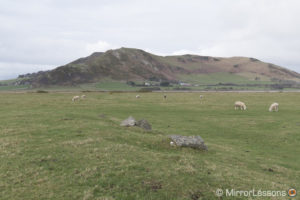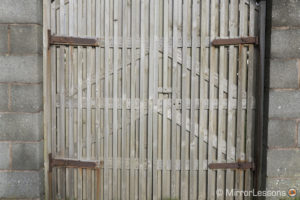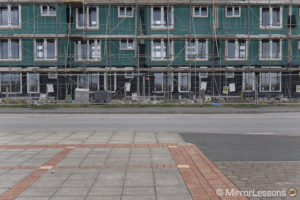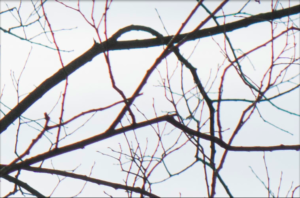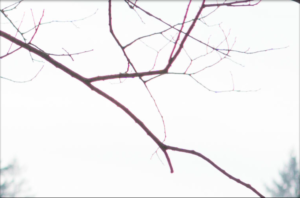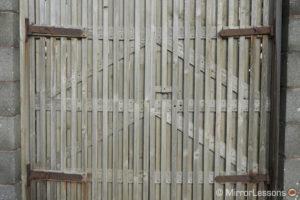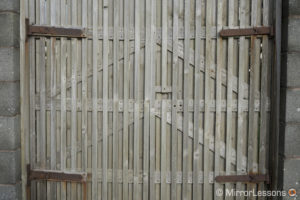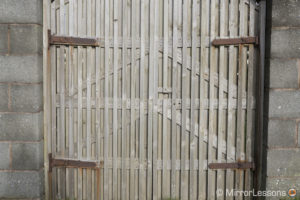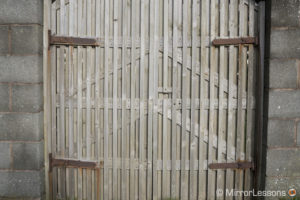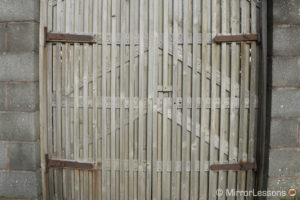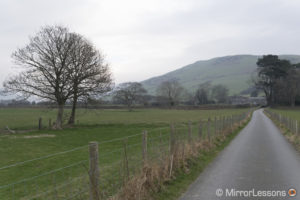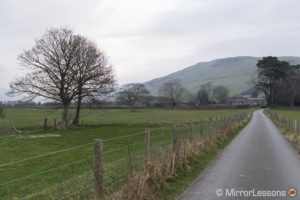As of today, there are three standard autofocus primes for the Sony E-mount APS-C system with an approximate 50mm field of view*: the Sony E 35mm f/1.8 OSS, Sigma 30mm f/1.4 DC DN Contemporary and Sigma 30mm f/2.8 DN Art.
The popularity of the a5000 and a6000/a6300/a6500 series coupled with the affordability and suitability of these three primes for a variety of genres means that they are amongst the most sought-after lenses for any camera system.
In the following comparison, our aim is to discover just how they compare in terms of their usability, optical quality and performance, and in the process, help you figure out which is best for your photographic needs. Let’s get started!
*Note: I’ve excluded the Sony E 30mm f/3.5 macro from this list as it is a dedicated macro lens.
Ethics statement: Sigma UK kindly provided us with samples of the Sigma 30mm f/1.4 and 30mm f/2.8 DN to test for three weeks. We bought the Sony 35mm f/1.8 for our own personal use. We were not asked to write anything about the lenses, nor were we provided with any sort of compensation. Within the article, there are affiliate links. If you buy something after clicking the link, we will receive a small commission. To know more about our ethics, you can visit our full disclosure page. Thank you!
[toc heading_levels=”2″]
Main Specs
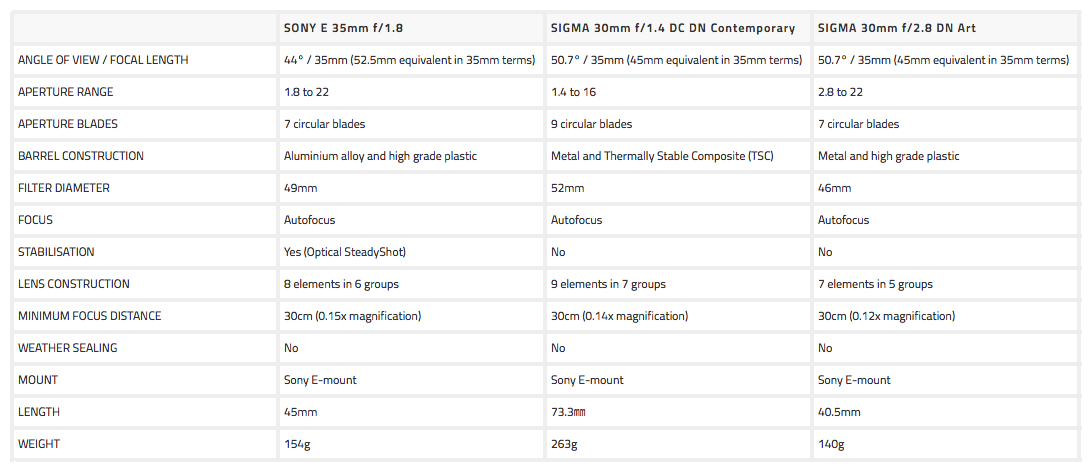
Design and Ease of Use
The 35mm f/1.8, 30mm f/1.4 and 30mm f/2.8 can all be considered “standard” primes in that they provide a field of view close to 50mm in full-frame terms (47°). Suitable for street, events, environmental portraits and travel, the standard lens tends to be one of the first investments a budding photographer will make after he or she grows tired of the limitations of the kit lens. The closest of the three to this standard angle of view is the 35mm (52.5mm equivalent) whereas the two 30mm Sigma lenses are a little wider (45mm equivalent).

Check price of Sigma 30mm f1.4 on Amazon and B&H Photo.
Check price of Sigma 30mm f2.8 on Amazon and B&H Photo.
Of all the lenses, the 30mm f/1.4 has the fastest aperture but lacks the f/22 value of the 35mm f/1.8 and 30mm f/2.8.
Though anything but big and heavy, the 30mm f/1.4 is certainly the largest* of the three primes featured in this comparison. In fact, it is nearly twice as long as the 35mm f/1.8 and the 30mm f/2.8, and approximately double the weight. This is due to the larger aperture and slightly more complex optical design. That said, it remains a good match for the APS-C system and you are unlikely to notice the additional bulk in a real-world shooting situation.
Although none of the lenses feature weather-sealing, they all sport a solid barrel made of a mix of high grade plastics and metal. Holding them in the hand, the 35mm f/1.8 comes across as the least robust of the three because there is less metal covering the exterior.
All three lenses make room for a fly-by-wire focus ring on the barrel. Those of the 35mm and 30mm f/1.4 are ribbed while the 30mm f/2.8’s is perfectly smooth. We find the 30mm f/1.4’s the most pleasant to use, partly because the deep ridges make it easy to turn but also because it is made of rubber, which prevents it from becoming uncomfortably cold in low temperatures. However, the 35mm f/1.8 is the easiest lens to unmount because its focus ring takes up less space on the barrel than either of the other lenses.
Besides the focus ring, you won’t find any other dials, rings, buttons or controls on the barrel.
All three feature a filter thread, albeit of different sizes, and share a decent minimum focus distance of 30cm.
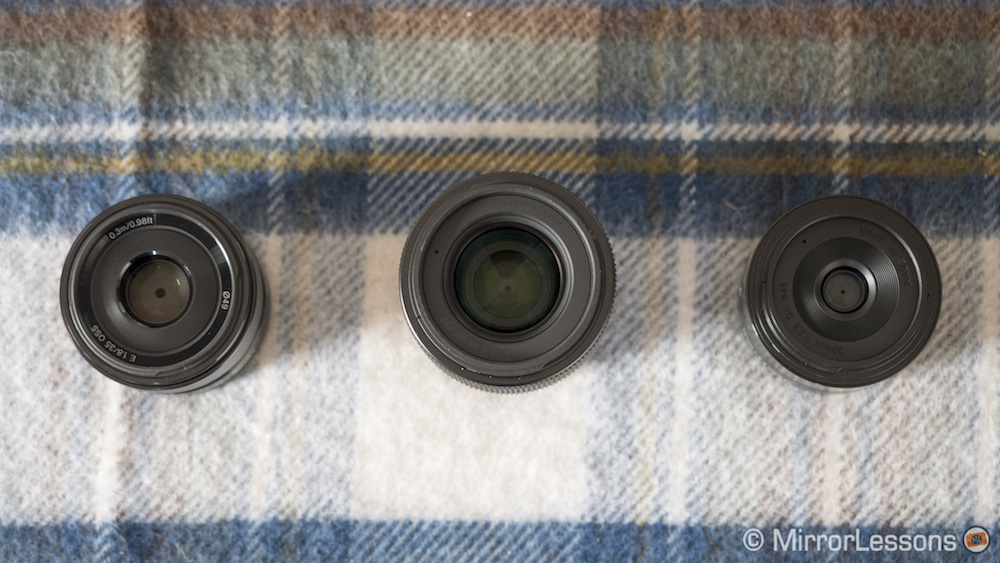
Accompanying each lens is a plastic lens hood which helps to mitigate flare and protect the front element. While the 35mm f/1.8’s is petal shaped, those of the two Sigma lenses are round.

Curiously, only the 30mm f/2.8 can be purchased in either black or silver. The other two lenses are only available in black.
*On the Sigma UK website, the 30mm f/1.4’s weight is incorrectly listed as being 140g. The actual weight is closer to 263g.
Optical Quality – Through the lens



Sharpness
To compare the sharpness of the lenses, I looked at their performance at the various aperture values at both long and short focus distances.
At a long distance set to their fastest respective apertures, we can see that the 30mm f/2.8 is sharper than either the 30mm f/1.4 or the 35mm f/1.8. This doesn’t come as a surprise: peak sharpness on an f/1.4 or f/1.8 prime lens is rarely found at the fastest aperture and the f/2.8 aperture of the Sigma 30mm Art gives more contrast to start with. The 35mm f/1.8 is only a little sharper than the 30mm f/1.4 but once again, this is due to the difference in aperture.
Stopping down to f/2 doesn’t do much to improve the sharpness of the 35mm f/1.8 or 30mm f/1.4
Once you stop all three down to f/2.8, the playing field becomes more even, though one look at the detail in the picket fence and stone wall shows that the 30mm f/2.8 and 35mm f/1.8 give more micro-contrast at this value.
At f/4, sharpness reaches its peak on the 30mm f/2.8 and there is barely a difference between the three lenses.
By f/5.6, the 30mm f/1.4 and 35mm f/1.8 overtake the 30mm f/2.8 by a small margin. This is because diffraction already appears at f/5.6 on this lens (which I found quite surprising to be honest). However, by f/8, the results seem to even out once again as diffraction takes its toll on the other two lenses. It is at this value that all three lenses begin to lose some contrast as well.
f/11 is usable on all three lenses but any value beyond this should be avoided if possible.
Comparing the lenses at a closer distance – in this case, about 1.5 metres away from the subject – reveals a different story.
At their respective fastest apertures, the results appear almost identical even though the 35mm f/1.8 and 30mm f/1.4 have a much faster maximum aperture than the 30mm f/2.8.
Stop down to f/2.8 and both the 35mm f/1.8 and 30mm f/1.4 immediately overtake the 30mm f/2.8.
At f/4, the results are almost identical but the fine detail in the cracks of the wood suggest that the 30mm f/1.4 is the sharpest.
Between f/5.6 and f/11, the results are so close that it is nearly impossible to tell them apart. Peak sharpness is found at f/5.6 and diffraction begins to appear by f/8.
As for the corners, you’ll immediately notice how much sharper the two Sigma lenses are compared to the Sony up until around f/5.6.
In short, each lens seems to have its own set of strong and weak apertures. Despite being the least expensive lens in the trio, the 30mm f/2.8 performs extremely well at its fastest aperture and f/4 at long focus distances close to infinity, while the 30mm f/1.4 shines at closer focus distances, even at f/1.4 and f/2. The 35mm f/1.8 appears to be a good all-rounder, performing well at both close and long focus distances at the centre. Its only downfall is corner softness at the fastest values.
Bokeh
Another important aspect to consider is the out-of-focus rendering, or bokeh, of the lenses since all three can be used for environmental portraits. This is especially true in the case of the 30mm f/1.4 and 35mm f/1.8 because of their fast maximum apertures.
Looking at the three lenses side-by-side at their respective maximum apertures, we can see that the 30mm f/1.4 provides the softest, most pleasant out-of-focus rendering. All three have round specular highlights (bokeh balls) at the centre which gradually lose their shape as they get closer to the edges. The 35mm f/1.8 and 30mm f/1.4 produce the most distinct “cat’s eye” bokeh balls in the corner.



At f/1.7, not only do the bokeh balls of the 30mm f/1.4 take on a rounder shape in the corners compared to the 35mm f/1.8 at f/1.8, but the rendering is also a little smoother.
A similar tendency can be seen at their fastest shared aperture of f/2.
The fastest aperture all three lenses share is f/2.8. At this value, the 35mm f/1.8 and 30mm f/1.4 look much more similar, though there is an unpleasant texture on the bokeh balls of the Sony lens. The 30mm f/2.8 continues to have the smallest bokeh balls but the overall rendering is nearly identical to its two siblings.



Looking at these examples and those in the sharpness section, there is no question that the 30mm f/1.4, with its very fast maximum aperture, smooth rendering and excellent sharpness at mid-to-close distances, is the best option for environmental portraits. It is closely followed by the 35mm f/1.8, while the 30mm f/2.8 can be used at a pinch.
Flare, chromatic aberration, distortion
All three lenses defend themselves well from flare and ghosting. I only came across a few examples when shooting into direct sunlight, the worst of which you can see below. Otherwise it didn’t present an issue.
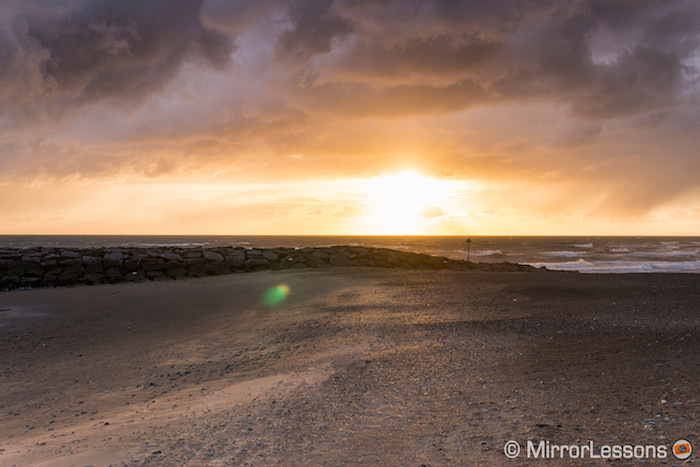
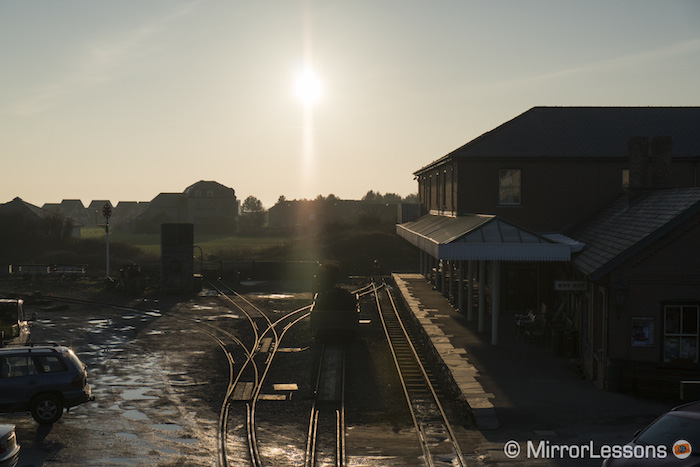
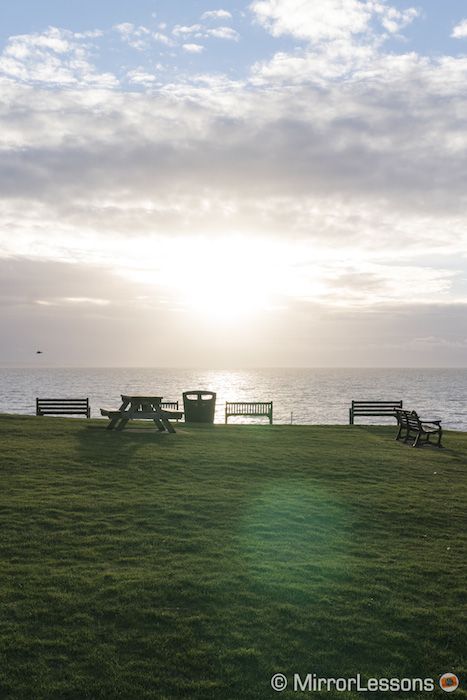
Chromatic aberrations are present at the fastest apertures of all three lenses but they can be reduced or even removed in Lightroom by applying the appropriate corrections. The 35mm f/1.8 suffers the most, showing evidence of purple fringing up to f/4. It is only present at f/2.8 on the 30mm f/2.8 and is most severe up to f/2 on the 30mm f/1.4.
Corrections to distortion and vignetting are automatically applied for the Sony 35mm f/1.8 and Sigma 30mm f/2.8 in post-production software programs like Lightroom. For the Sigma 30mm f/1.4, you must scroll down to the Lens Corrections menu and activate the dedicated lens profile.
Without the profile, distortion is visible from all three lenses, with the worst offender being the 30mm f/1.4.
As for vignetting, the 35mm f/1.8 suffers a little more wide open than the two Sigma lenses but once the corrections have been applied, you barely notice the effects.
If you tend to shoot OOC JPGs, the best way to reduce vignetting, chromatic aberration and distortion is to enter the Lens Comp. sub-menu of your Sony APS-C camera and set the three options (Shading Comp., Chro. Aber. Comp., Distortion Comp.) to Auto. It doesn’t do much to help the chromatic aberration at the fastest apertures but it does a good job of fixing vignetting and distortion.

Field of View
Given that the Sony lens has a different focal length to the two Sigma lenses, it makes sense that its field of view is slightly narrower.
What is interesting to observe, however, is the difference between the two Sigma lenses. Despite the fact that, on paper, their angle of view and focal length are identical, the 30mm f/2.8 actually provides a slightly wider field of view than the 30mm f/1.4 at both close and long focus distances.
Also interesting is the fact that all three lenses produce a very similar composition at their shared minimum focus distance of 30mm, with the 35mm f/1.8 and 30mm f/1.4 being the most similar. The explanation for this is that the latter has more focus breathing and alters the field of view more noticeably than the other two lenses.
Stabilisation
Comparisons aren’t necessary for this section of the article because only the Sony 35mm f/1.8 comes with optical stabilisation (Optical SteadyShot). For those who own a Sony APS-C body without in-body stabilisation – essentially all bodies except the a6500 – having optical stabilisation can be an enormous advantage when shooting at slow shutter speeds.
With the 35mm f/1.8, I found it quite easy to use speeds as slow as 1/3 of a second or even 0.4s with a couple of attempts. With the Sigma lenses and a non-stabilised Sony body like the a6300, it is risky to go below 1/15th of a second.

Autofocus Performance
To test the autofocus of the three lenses, I used one of the latest Sony APS-C models, the a6300, with the latest firmware (version 1.10). It uses Sony’s most recent hybrid autofocus system which comprises 425 phase detection AF (PDAF) points that cover the entire surface of the sensor and 169 contrast detection points. You can find out more about the a6300’s autofocus system here.
Now let’s have a look at how the three lenses perform on the a6300:
- The Sony 35mm f/1.8 is the only lens that is perfectly compatible with a6300’s PDAF system, which makes sense given that it is a Sony E lens. If you switch over to C-AF and Wide focus area, for example, the green PDAF squares will light up across the frame regardless of where your subject moves.
- With the Sigma 30mm f/1.4, the PDAF squares only work across the vertical central area of the field of view. If the subject moves outside of this area, the camera will use contrast detection AF instead. Our hope is that the lens will become fully compatible with PDAF via firmware update at some point.
- The Sigma 30mm f/2.8 is the most limited of the three since the PDAF squares only work in the very centre.
In S-AF with the flexible or centre point, all three lenses lock onto the subject quickly but aren’t as blazingly fast as some other lenses for the E-mount. In low-light or low-contrast situations, you may notice that the AF hunts back and forth a little before locking onto the correct focus point. Surprisingly, this seems to happen more with the 35mm f/1.8 and 30mm f/1.4 than with the 30mm f/2.8.
All three lenses have a near-silent autofocus mechanism, though once again the prize goes to the 30mm f/2.8. The 35mm f/1.8 produces a faint clinking noise when it focuses, while the 30mm f/1.4 clicks when it locks onto a focus point.
Below you can watch a video that briefly demonstrates the autofocus performance of the three lenses for stills on the a6300:
For video in C-AF, all three lenses are capable of quickly shifting from one focus point to another. The 30mm f/1.4 is the slowest of the three (but only by a small margin), whereas the 35mm f/1.8 and the 30mm f/2.8 perform in a similar manner.
Manual Focus
In manual focus mode, we found the fly-by-wire focus rings of all three lenses accurate and easy to use. As mentioned in the design section, our favourite focus ring is that of the 30mm f/1.4 because it is large, deeply ribbed and made of rubber. Our least favourite is the 30mm f/2.8’s mostly due to its smooth surface but also because quite cold to the touch in low temperatures.
With the 30mm f/1.4, the time it takes to travel from infinity focus to the closest focus distance depends on the speed at which you turn the ring. Turn it quickly and it only takes a 1/4 of a turn; turn it slowly and it can require multiple turns of the ring. This mechanism is helpful as it allows you to fine-tune your focus point with more precision.
The 35mm f/1.8 and 30mm f/2.8, on the other hand, require a full turn or 3/4 turn respectively to go from infinity to the minimum focus distance regardless of the speed at which you turn the ring.
As mentioned earlier, the 30mm f1.4 has more focus breathing in comparison to the other two lenses.
Conclusion
Before beginning this comparison, I had assumed that 35mm f/1.8 and 30mm f/1.4 would outperform the 30mm f/2.8 in every way due to the large price difference between them but, as it often happens, the results weren’t so clear-cut.
For those with a keen interest in environmental portrait work or any other genre that requires an attractive bokeh, there is no question that I’d recommend the Sigma 30mm f/1.4. In addition to providing impressive sharpness at a close-to-mid range, it also has the most attractive out-of-focus rendering of the three thanks to its very fast aperture, large and clean bokeh balls, and smooth transition between elements.
The Sigma 30mm f/2.8 isn’t the ideal choice if you are looking for shallow depth of field. First, its maximum aperture is only f/2.8, and second, it is softer at this value than either the 35mm f/1.8 or 30mm f/1.4 when set to a close focus distance. However, since it is pin-sharp across the frame between f/2.8 and f/4 and very useable at f/5.6 and f/8 at mid-to-long focus distances, it remains a good alternative for street, documentary and even landscapes. And we mustn’t forget that it is much less expensive than either of the other two lenses.
Finally we come to the Sony 35mm f/1.8, the lens I consider the best “all-rounder” of the three. Providing very good optical results at all apertures, it suits practically any genre from environmental portraits to street and landscapes. What’s more, it is the only lens of the three to feature optical stabilisation and full compatibility with the a6000/a6300/a6500’s phase detection AF system. There are only two caveats: corner softness at the fastest apertures (which matters less if you are shooting portraits) and the price (it is the most expensive of the three).
Choose the Sony 35mm f/1.8 if you:
- require a very compact solution for your Sony APS-C camera
- shoot a mix of environmental portraits, street and landscapes (though keep in mind that the corners can be soft up to f/5.6)
- can benefit from the optical stabilisation for low-light shooting
- plan to shoot action/moving subjects with this lens and could benefit from full PDAF compatibility
Choose the Sigma 30mm f/1.4 if you:
- require excellent sharpness and a beautiful bokeh for environmental portraits
- often shoot in poor light conditions and can benefit from the 1.4 aperture
Choose the Sigma 30mm f/2.8 PRO if you:
- are on a tight budget
- require a very compact solution for your Sony APS-C camera
- shoot mostly street and landscapes
- don’t often work in poor light conditions
Check price of the Sony 35mm f/1.8 on Amazon | Amazon UK | B&H Photo | eBay
Check price of the Sigma 30mm f/1.4 on Amazon | Amazon UK | B&H Photo | eBay
Check price of the Sigma 30mm f/2.8 on Amazon | Amazon UK | B&H Photo | eBay
Second-hand E-mount lenses on
You may also be interested in:
- Sony 35mm f/1.8 vs 50mm f/1.8 – The complete comparison
- Sony 50mm f/1.8 vs Sigma 60mm f/2.8 – The complete comparison
Sample Images
Sony 35mm f/1.8








Sigma 30mm f/1.4







Sigma 30mm f/2.8









